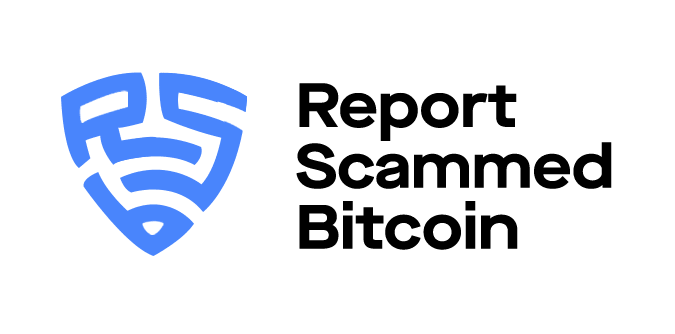Blockchain Networks Explained
A blockchain network is a digital laser that records data lists and decentralizes and distributes them. These data lists are then sorted into blocks that are encrypted and sorted chronologically using encryption.
Many people believe that the blockchain networks were invented in 2009 when Bitcoin was on the market. However, it was created much earlier. W. Scott Stornetta and Stuart Haber came up with the idea of securing digital data and documents by utilizing cryptography in a chain of blocks. The original motivation behind the blockchain network was to avoid data tampering. Similarly, we will explain the meaning of blockchain as we move forward with the article.
Every block contains a list of transactions that have already been confirmed. The blockchain network functions as a distributed ledger for record-keeping because numerous computers administer it worldwide.
As a result, every computer, also known as a node, stores a copy of the blockchain ledger. These nodes communicate with one another in real-time to ensure that all information on the chain is correct. Also, this means that transactions on the blockchain take place within a self-contained peer-to-peer network. However, this allows cryptocurrencies to be borderless, decentralized, and censorship-resistant.
For example, Assume Rachel and Adam have some digital assets, but Rachel owes Adam 5 coins. Rachel sends a message to all network participants containing the transaction information to send Adam the digital currency she owes him.
Rachel provides Adam’s crypto address in this transaction. This digital signature confirms two things: Rachel owns the coins she is sending, and Adam is the recipient of the coins.
Once all participants confirm that the transaction is valid, it is set up to dig into blockchain networks. In a moment, I will go further about myself. Note that block information is easier to share with other network participants if the block is finally mine.
Types Of Blockchain Networks
There are three types of blockchains available on the market today. These are not the blockchains that some people believe are based on distributed ledger technology or DLTs. However, there are three types of blockchains: public, private, and hybrid.
1. Public Blockchain
Because public blockchains are open-source networks, anyone who wants to participate can; users can be miners, community members, developers, or investors. All network transactions are entirely transparent, which means that anyone can see the details of any transaction.
Furthermore, public blockchains are decentralized, with no single entity in charge. They are also resistant to censorship. They are accessible to anyone, regardless of who or where making it difficult for authorities or governing bodies to shut them down.
2. Private Blockchain
A private blockchain is the second type of blockchain. These are permission blockchains, which differ from public blockchains in several ways. For example, a user must first obtain consent to join the blockchain. Furthermore, transactions are private, meaning only participants with permission can see the details. Furthermore, private blockchains are more vulnerable to centralization than public blockchains.
As a result, private chains appeal to large corporations and enterprises that need to share or collaborate. Blockchain developers design these. A private blockchain allows them to share information without jeopardizing sensitive data. The businesses that run the chain have complete control over governance and participants, but this is typically accepted in exchange for the other benefits that a private blockchain provides.
3. Consortium Blockchain Network
Unlike private blockchains, consortium blockchains are permission blockchains managed by a group of organizations rather than a single institution. As a result, consortium blockchains are more decentralized than private blockchains, which increases security.
On the other hand, consortiums can be difficult to establish because it requires cooperation between different businesses, which creates logistical problems and risks of mistrust breach.
In addition, some supply chain participants may lack the required technology or infrastructure to implement blockchain technologies. Those who do may decide that the initial costs of digitizing their data and connecting with other supply chain members are too high to bear.
4. Permissioned Blockchain Network
Businesses that create a personal blockchain typically set up an authorized blockchain network. Also, should note that public blockchain networks can also be permitted. Also, this restricts who is authorized to use the web and what transactions they can perform. However, participants must first receive an invitation or authorization to participate.
Permissioned blockchain networks provide a decentralized platform, meaning data is not stored in a central repository. Any person can access it at any time and from any location. It ensures that all records are signed with immutable signatures. Because all information exchange and transactions are encrypted cryptographically, the entire system is safe and secure. Related: [What Is Blockchain Technology? How Does It Work?]
Industries That Benefit From Various Blockchain Networks
Many new and emerging industries benefit vastly from blockchain technology. The most significant amongst them is the cryptocurrency being adopted at a high-speed rate worldwide. Another one is the NFT industry which is relatively new but is becoming popular day by day.
Blockchain has also been used in local service places like energy companies, gas companies, water suppliers, etc. An example of their use is the smart grid, which makes a focal point for sharing resources. Blockchain has also made transactions more secure, especially for government officials and government jobs.
Concerns Surrounding Blockchain Technology

So far, we have seen the credibility and usage of blockchain, but there are some severe risks surrounding it which make mass adoption impractical. Below we debrief a few of these issues:
Security
No matter how secure they appear, blockchains are only as fast as their weakest link. For example, if someone wanted to access data shared within a private blockchain, they only needed to connect to one node.
The device in a blockchain that is the easiest to hack is a threat to the privacy of the entire blockchain network. Unfortunately, this isn’t the only risk associated with blockchains. Although it is nearly impossible to forge a blockchain transaction in a blockchain, a fraudulent transaction can be approved.
Transparency
There has been much debate about blockchain technology in supply chains. It appears to be a fantastic idea! After all, making supply chains transparent can provide everyone with the closure they need to make ethical decisions. However, using a public blockchain network (the most common form) in a commercial setting isn’t always good.
If a supply chain becomes transparent, so will the data of all the customers and partners who do business with that company. When working in a commercial setting, complete transparency isn’t ideal because it allows participants to see what others are doing.
Consumption of Energy
Blockchain network technology uses more energy than any other type of centralized system. Not only does their redundancy consume more power than a typical centralized cloud-based system, but their transaction validation method also plays an important role.
For starters, they necessitate more storage than any other system.The number of nodes added to a blockchain network requires multiple strengths. Each node stores and processes nearly as much data as the central body in any other system.

